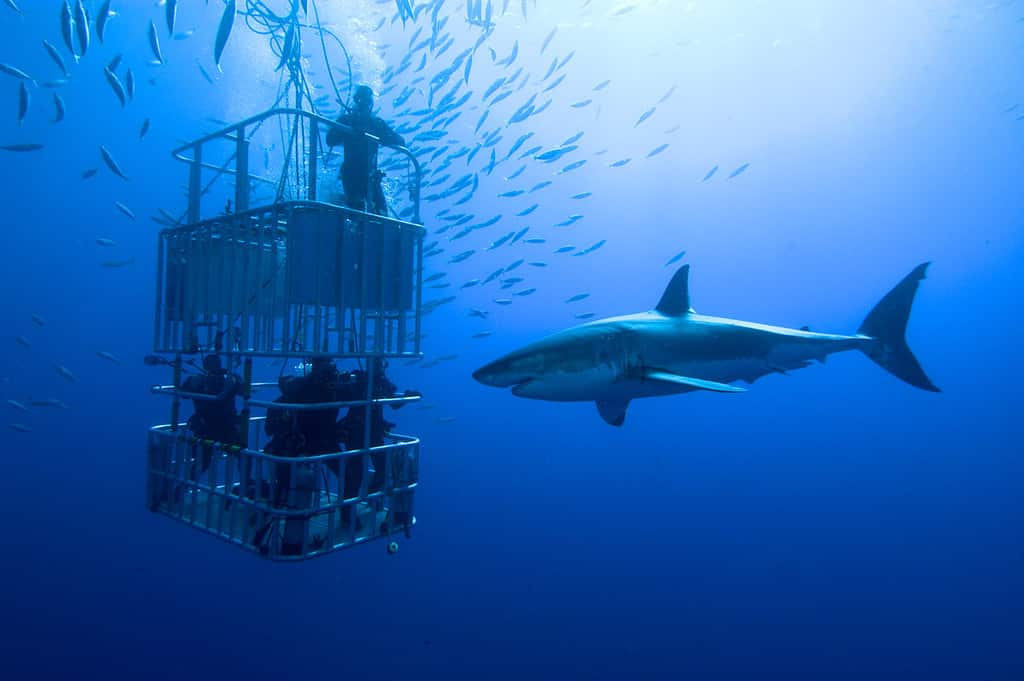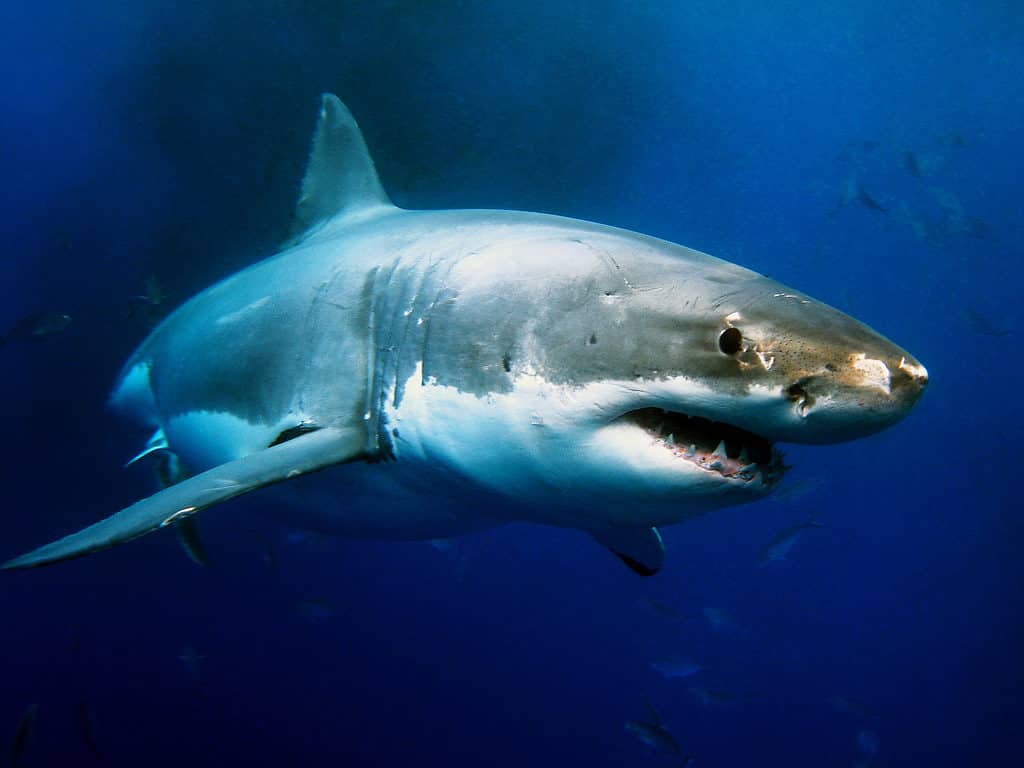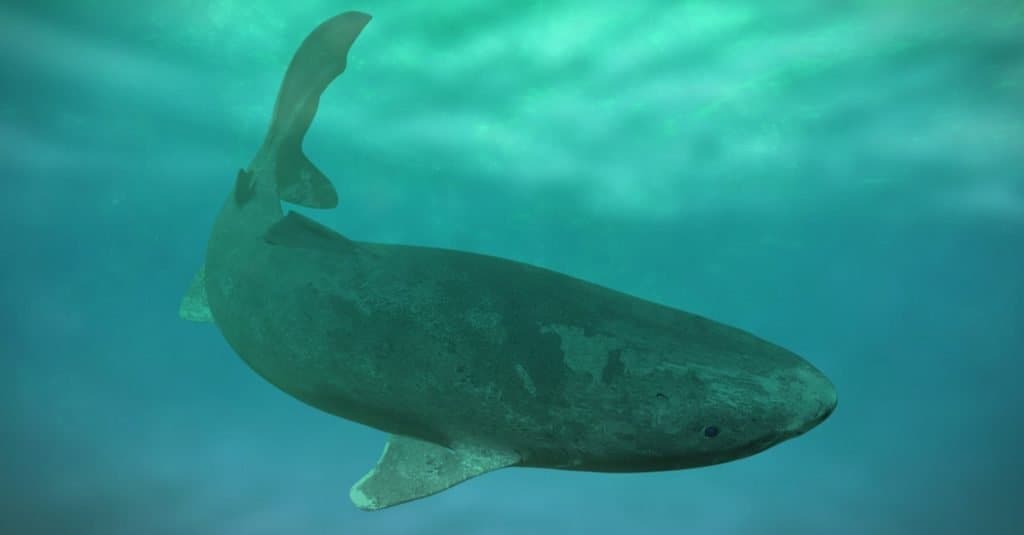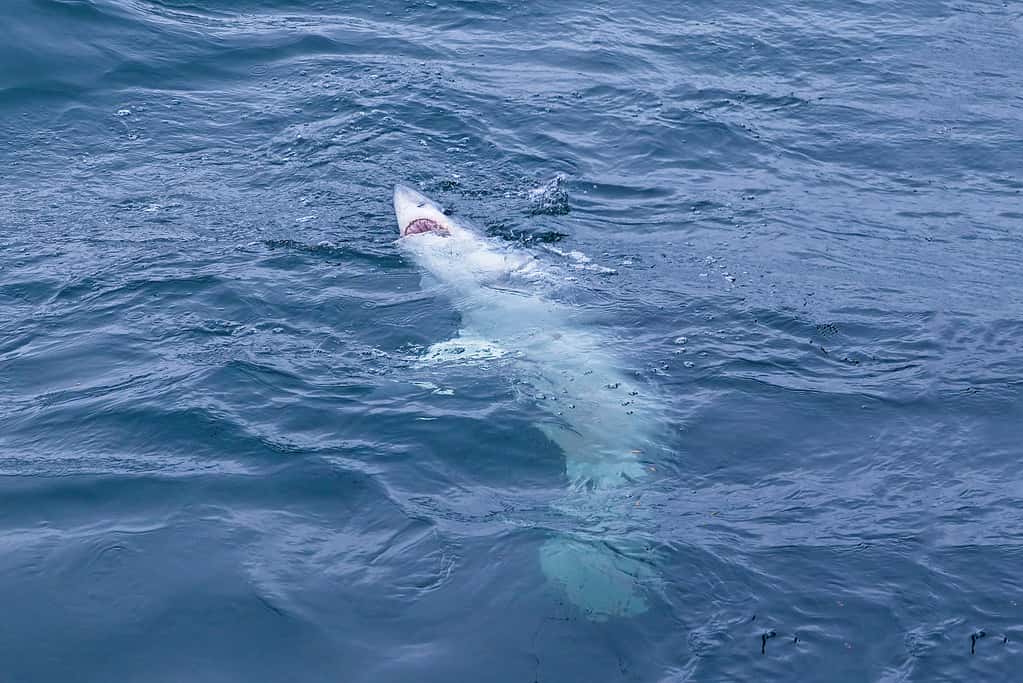Great white sharks are fascinating. For decades, these massive sharks have been at the center of films, TV series, and popular movies. Despite their ferocious appearance, though, great white shark attacks, and shark attacks in general, are rare. Great whites are one of the largest species of sharks still alive today and are known for their mystery and powerful jaws. In Canada, there are over 50 species of sharks, one of which is the great white. Some of the largest great whites ever caught in the world were found in Canada. Follow along to discover the largest great white shark ever caught in Canada.
Are Great White Sharks Common in Canada?
Great white sharks are rare off the coast of Canada. Although uncommon, they are sometimes spotted or ‘pinged’ nearby. The most common place these majestic and large creatures are spotted is in Nova Scotia. In 2020, OCEARCH tagged multiple great whites off the coast of Nova Scotia. One was Breton, a male 13-foot and 3-inch long shark. He weighed 1,437 pounds and, in nearly two years, has traveled almost 30,000 miles!

Great white sharks are most common off the coast of Nova Scotia in Canada.
©Stefan Pircher/Shutterstock.com
The Largest Great White Shark Ever Caught in Canada
The largest great white shark ever caught in Canada was truly impressive, and it is one of the largest in the world! In 1983, David McKendrick caught an impressive 5.2-meter-long great white by accident off the coast of Prince Edward Island. The fisherman was 22 at the time when the great white was caught in his net. When they pulled the net up, the shark was dead. McKendrick regrets this catch as he and the other fishermen didn’t realize what they had caught. Soon after this massive shark was hauled to shore, it was buried in a nearby gravel pit. The shark’s jawbone was sold to a museum in Miami, and Tom Hurlbut from the Canadian Department of Fisheries and Oceans dug up and dissected the remains.
About Great White Sharks
Great white sharks are unique and fascinating fish. They are also very mysterious. We still don’t know a lot about these sharks, including how many months they gestate and when they reach maturity. No one has ever seen a great white shark give birth or mate. They are secretive and travel deep into the Pacific Ocean, disappearing. Although there are a lot of mysteries surrounding great whites, scientists have a general understanding of these misunderstood creatures. Keep reading to learn more about great whites and other sharks in Canada.

No one has ever seen a great white shark give birth.
©iStock.com/Whitepointer
Appearance and Size
Great whites are easy to identify from their unique appearance and size. They are thick and long grey and white sharks. At birth, a great white can be as long as 5 feet. Adult great whites are about 11 to 16 feet long. Female great whites are generally larger than males and may weigh as much as 4,410 pounds. There is a lot of debate over the true maximum size of a great white. Some sources state that the largest recorded great white was 19 feet long. However, unverified reports claim some great white spottings as long as 32 feet.
Distribution and Habitat
These massive sharks have a wide range. They live and travel throughout almost all coastal and offshore waters between 54 and 75 °F. They are excellent and fast swimmers who spend most of their lives migrating. In one year, a great white shark may travel as far as 2,500 miles or more. You can spot great whites off the coast of California, Florida, Japan, southern Australia, and even the Mediterranean (although uncommon).
Diet
Although known as ‘man-eaters,’ great white shark attacks are rare. Instead, great whites typically attack humans when confused. Sometimes, kicking legs and flailing arms can resemble the actions and figures of seals. Surfers and boogie boarders may look like sea turtles. However, attacks may still happen. So, if sharks don’t regularly eat humans, what do they eat?
Great whites consume anything from fish to squids and seals. They also regularly consume other shark species and marine mammals, like dolphins. Great whites are fast, silent, and strong. They have a bite force of up to 4,000 psi, but it depends on size.

Great whites are carnivores. They mainly consume seals.
©Sergey Uryadnikov/Shutterstock.com
Predators
Very few animals are courageous enough to hunt great whites. Adult great whites are only vulnerable to killer whales and humans. Juvenile great whites may be attacked by other shark species or mammals like dolphins, but this is rare. Killer whales, also known as orcas, have been recorded attacking and killing great whites for their livers.
Other Sharks in Canada
Great whites are just one species of sharks found in Canada. With the massive size of Canada, it’s no surprise that it’s home to about 50 shark species or more. Listed below are just a few that live or travel through Canada. Some are more common than others.
Greenland Sharks
The first shark on our list is the Greenland shark. This shark is also called the gurry shark. Currently, it’s listed as Vulnerable on the IUCN Red List. Greenland sharks live very long lives, anywhere from 250 to 500 years. These old sharks are native to North Atlantic waters around Greenland, Canada, and Iceland. They live in very cold waters. Greenland sharks aren’t just interesting for their native range, but their size. They can reach anywhere from 7 to 23 feet long and may weigh as much as 3,000 pounds.

Greenland sharks are native to the North Atlantic waters around Greenland, Canada, and Iceland. They are the only true sub-Arctic shark and the only shark that can tolerate Arctic temperatures year-round.
©Dotted Yeti/Shutterstock.com
Blue Sharks
Blue sharks also live off the coast of Canada. They are one of the most commonly spotted shark species in Atlantic Canada. They are long and slender, typically reaching 10 feet long. These slender sharks are listed as Near Threatened on the IUCN Red List and face threats like overfishing and accidentally tangling in nets. Blue sharks, as their name suggests, have blue on the top of their bodies and white bellies. Males weigh 60 to 121 pounds, while females can weigh as much as 401 pounds.

Female blue sharks are larger than male blue sharks.
© Alessandro De Maddalena/ via Getty Images
Shortfin Mako Sharks
Next on our list of sharks in Canada is the shortfin mako. This superfast shark species is sadly listed as Endangered on the IUCN Red List. Like blue sharks, shortfin makos are threatened by overfishing and bycatch. They are often tangled and killed in commercial fishing nets. Shortfin mako sharks need a lot of space to swim. Although aquariums and marine parks have attempted to keep them captive, even small and young shortfin makos, don’t survive long. The longest a shortfin mako has survived in captivity was five days.

Shortfin mako sharks are not suited for aquariums or small spaces.
©Xavier ELIAS Photography/Shutterstock.com
Porbeagle Sharks
Also in Canada is the porbeagle shark. This mackerel shark lives and swims throughout cold and temperate marine waters of the North Atlantic and Southern Hemisphere. On the IUCN Red List, these stout-bodied sharks are listed as vulnerable. On average, porbeagle sharks weigh about 280 pounds. They may also reach as long as 12 feet. Porbeagle sharks are best known for their dark, large eyes.

Porbeagle sharks may measure as much as 12 feet.
©birdsonline/ via Getty Images
Basking Sharks
Last but not least is the basking shark, which is hard to miss. This shark species lives worldwide in boreal to warm-temperate waters. In Canada, you can find basking sharks in the coastal waters of British Columbia. However, they are uncommon. On the IUCN Red List, basking sharks are listed as Vulnerable, with an increasing population.

The population of basking sharks is decreasing.
©Martin Prochazkacz/Shutterstock.com
The photo featured at the top of this post is © Ramon Carretero/Shutterstock.com
Thank you for reading! Have some feedback for us? Contact the AZ Animals editorial team.







